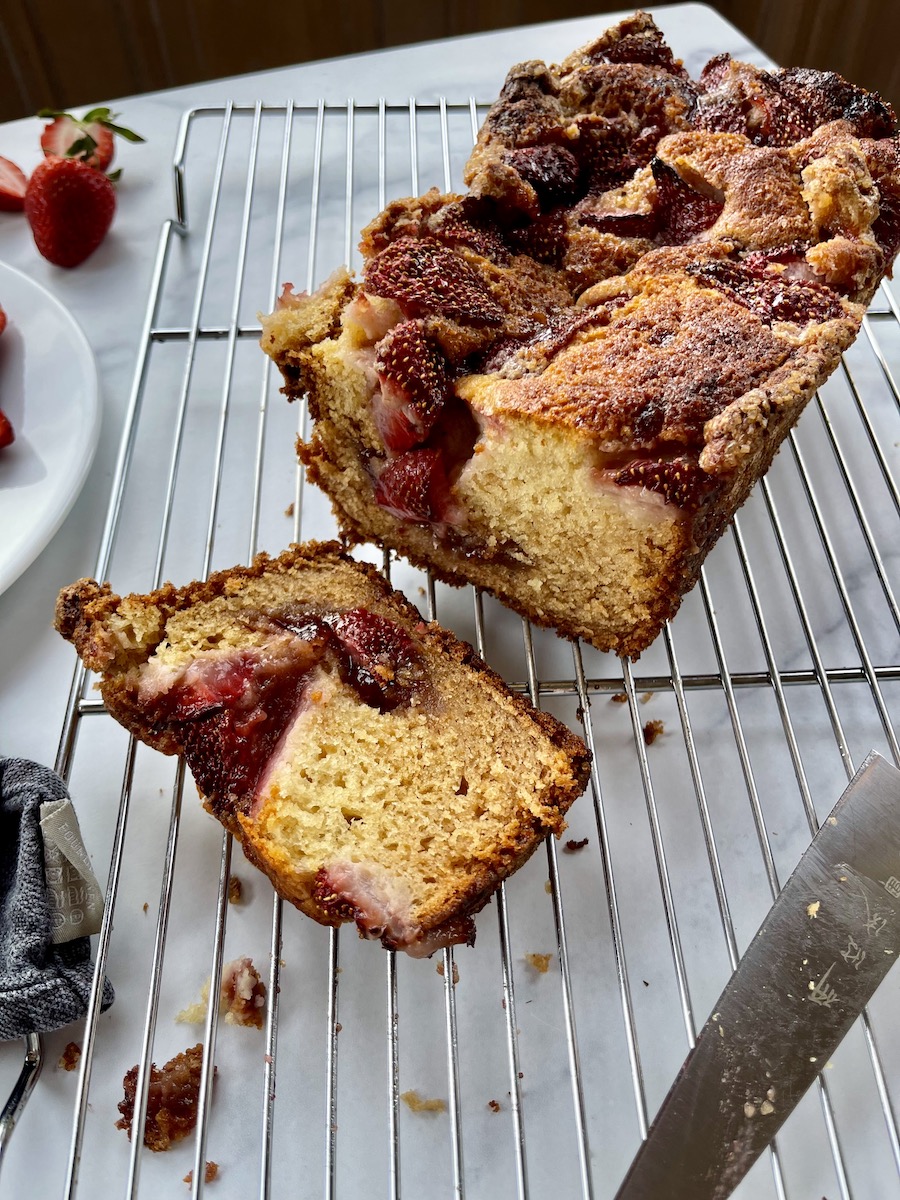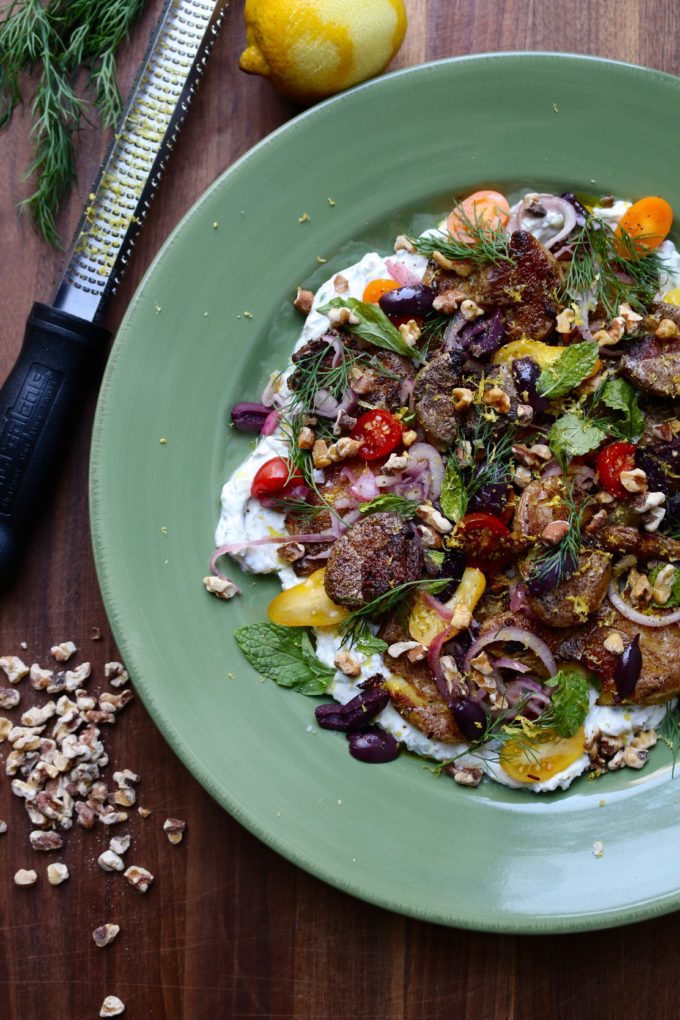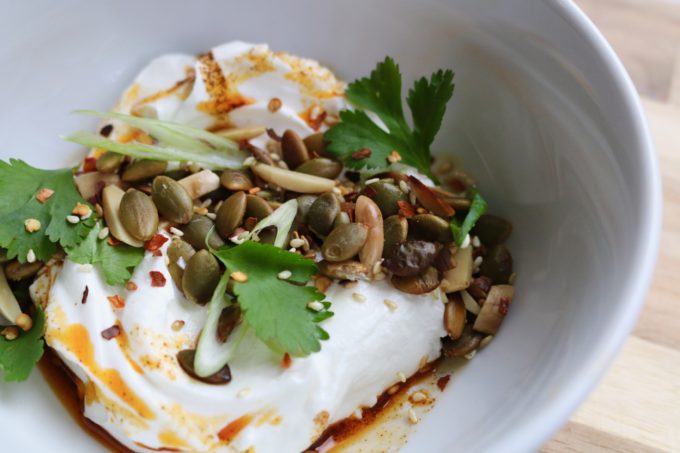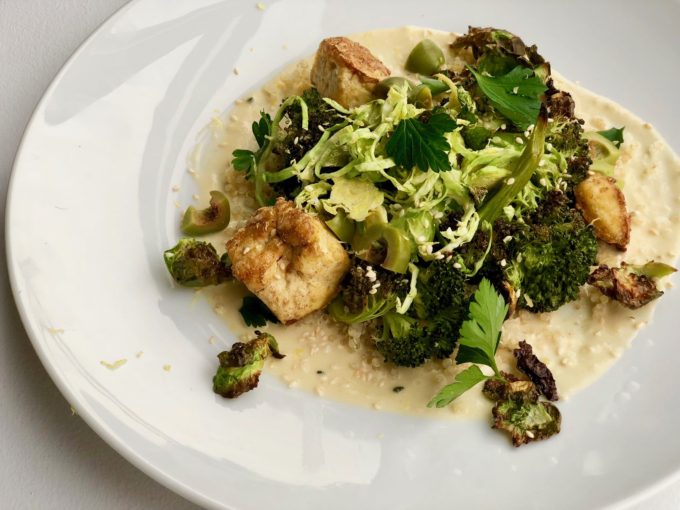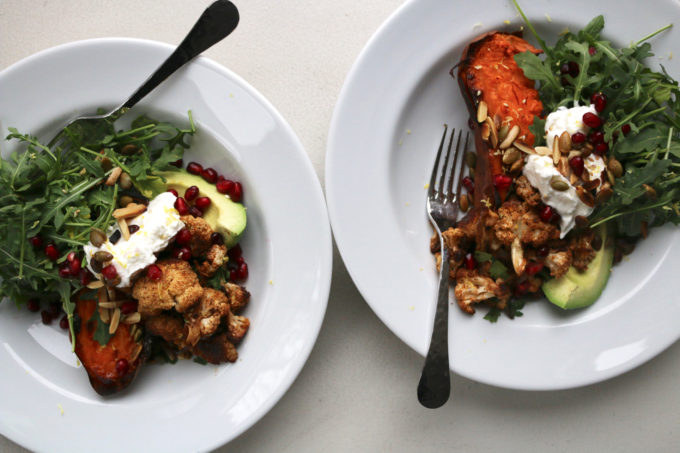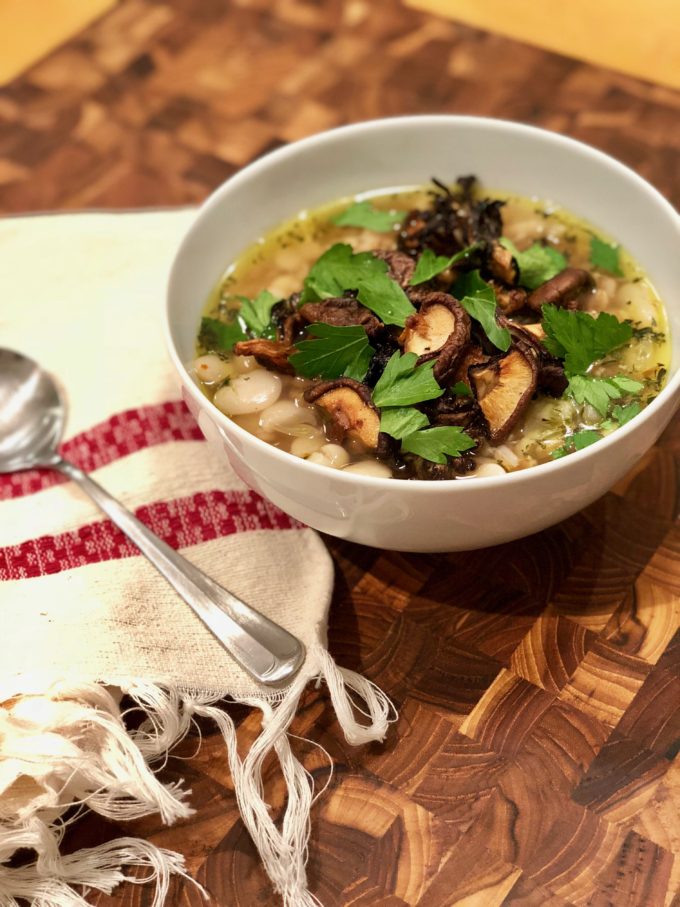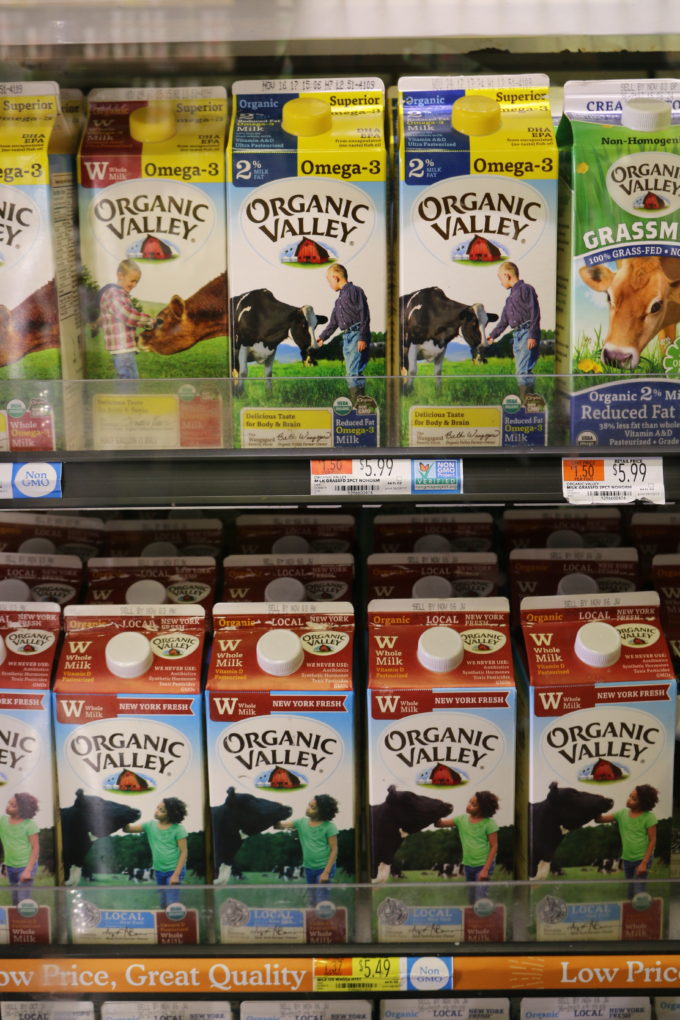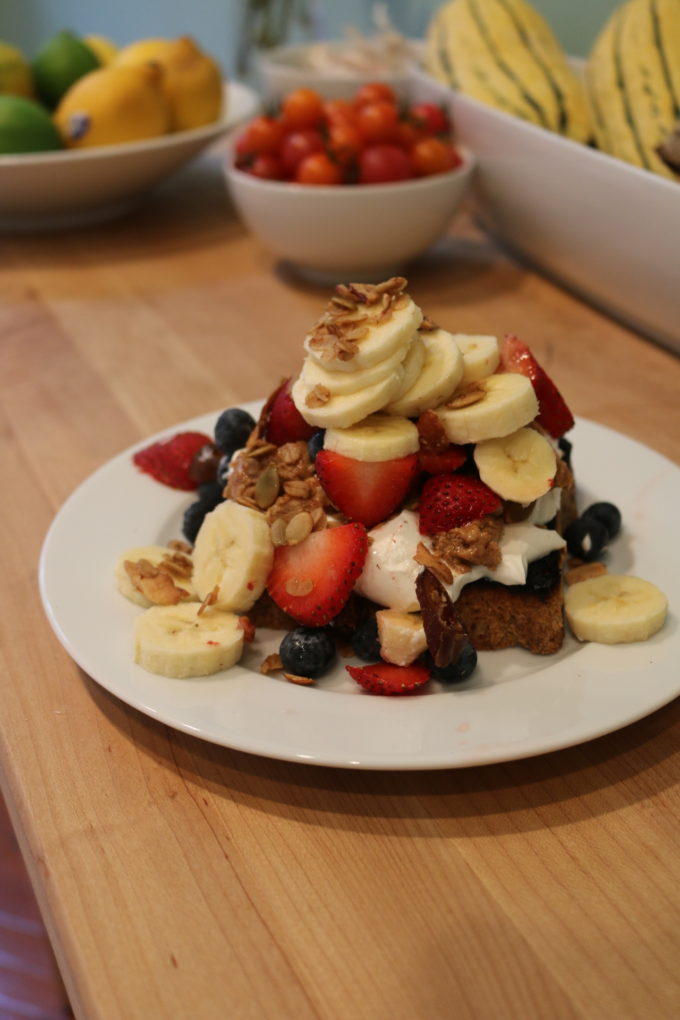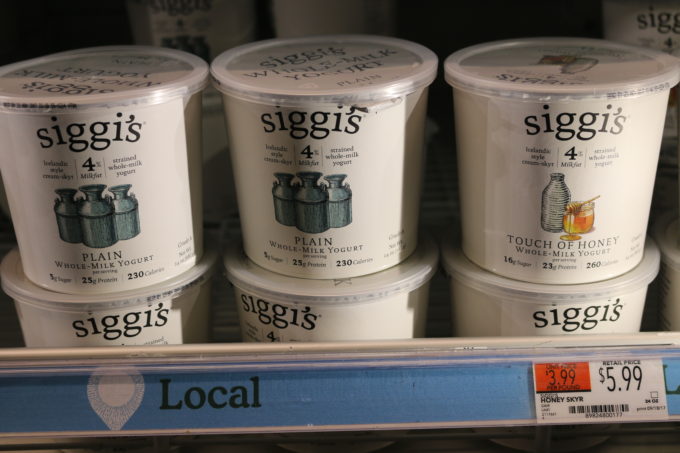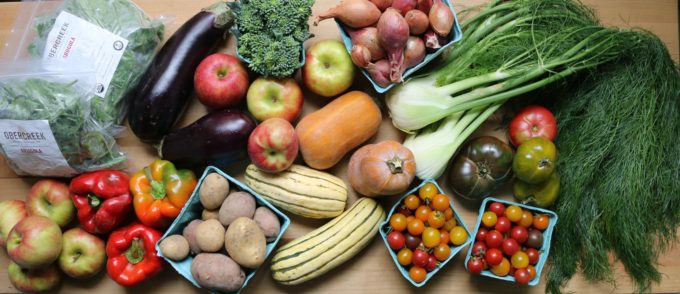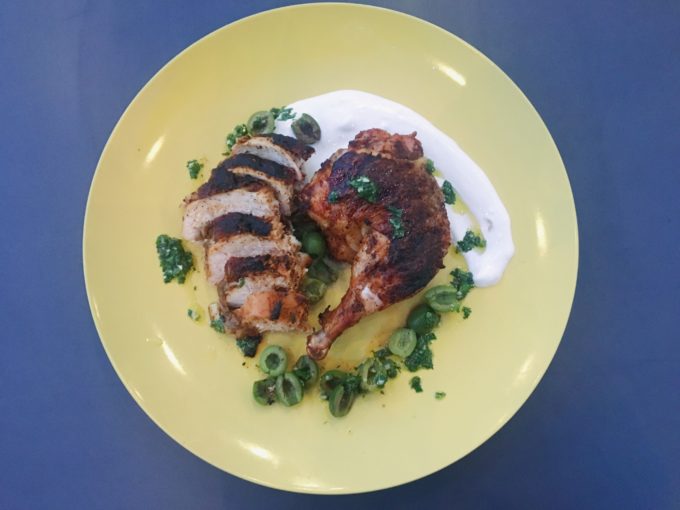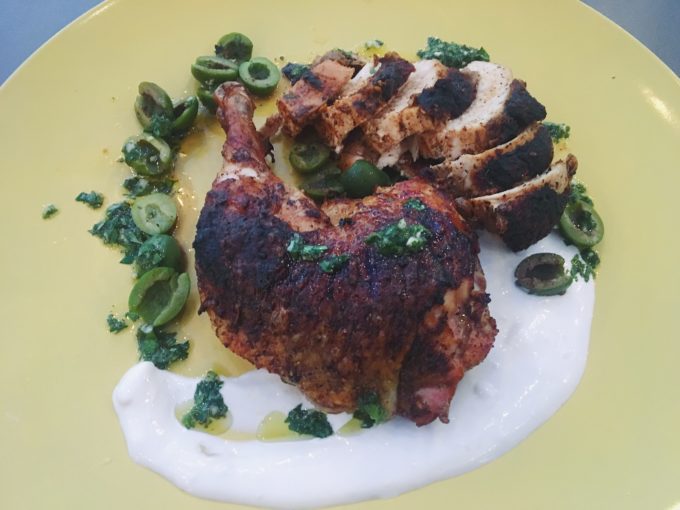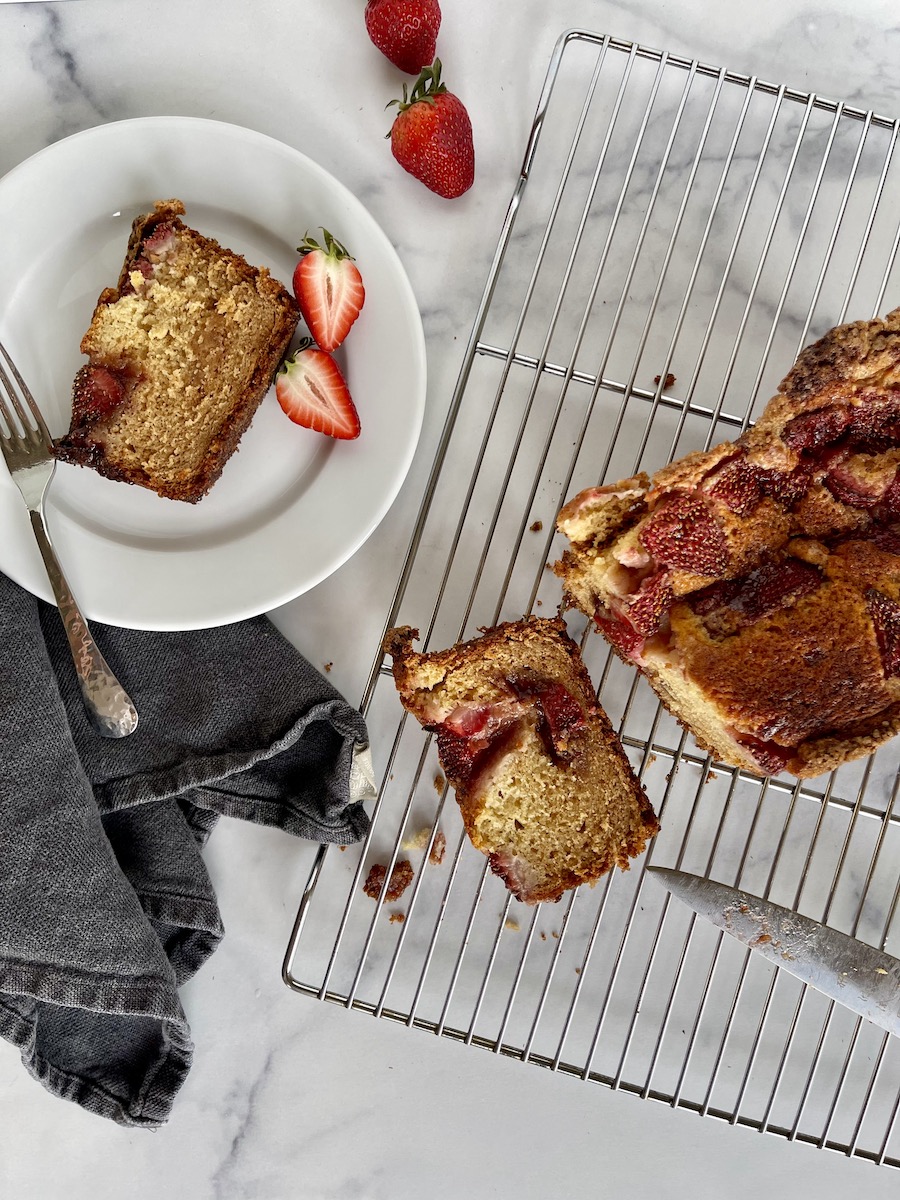
This Strawberry and Yogurt Loaf Cake is my latest obsession. While the yogurt batter itself is only barely sweet, the cake is baked in a crust of turbinado sugar and its top is dolloped with both super sweet strawberry jam and fresh strawberries. As the cake bakes, some of the jam falls to the bottom, some gets suspended in the middle and some stays right on top. The cake around that jam becomes a little custardy. So much to describe here but, really, you’re going to have to trust me…make this cake.
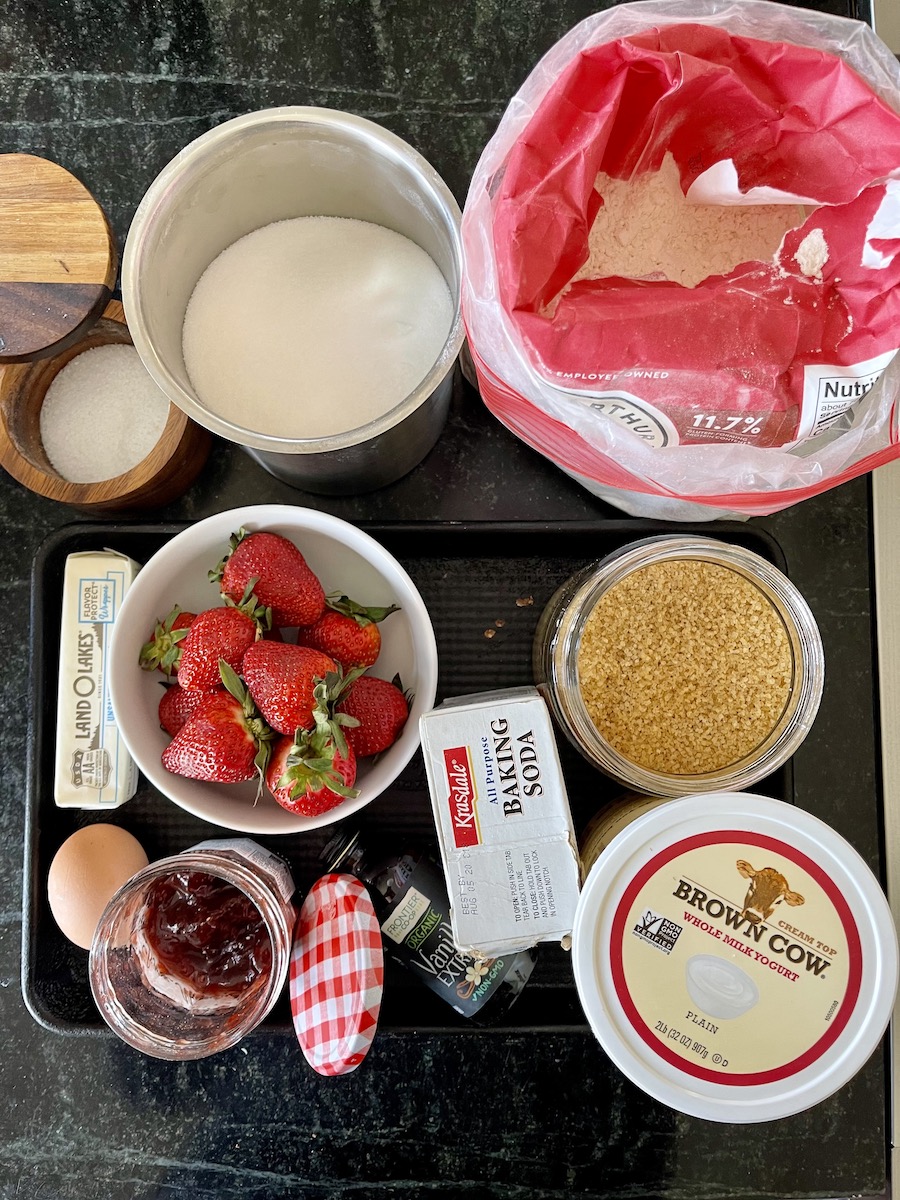
In addition, there is something about *loaf* cakes that speak to me. Like, if you give me the option of a slice of a loaf versus a traditional cake, I’ll always choose the former. My ranking is loaf cake > round cakes > sheet cakes > cupcakes. I’m sure that hierarchy is controversial. Anyone with me here?
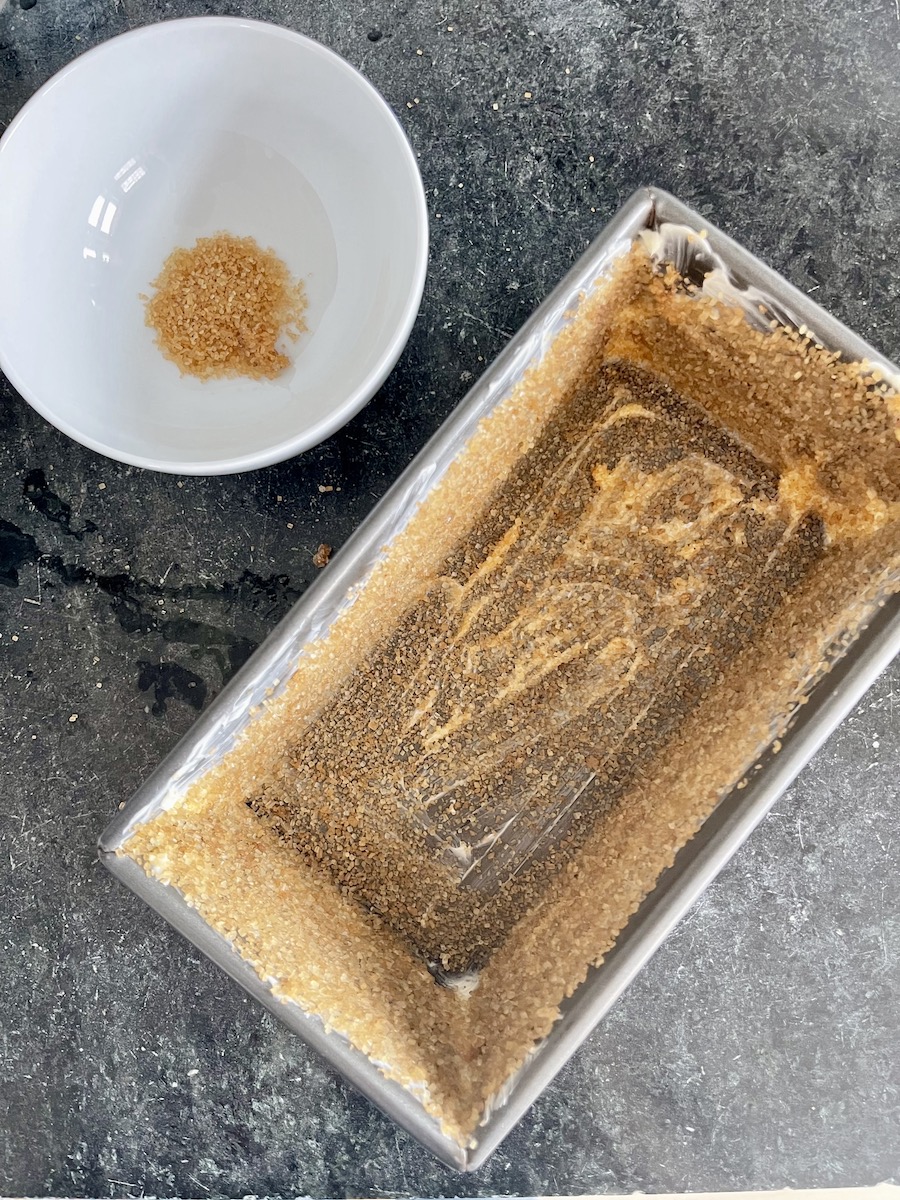
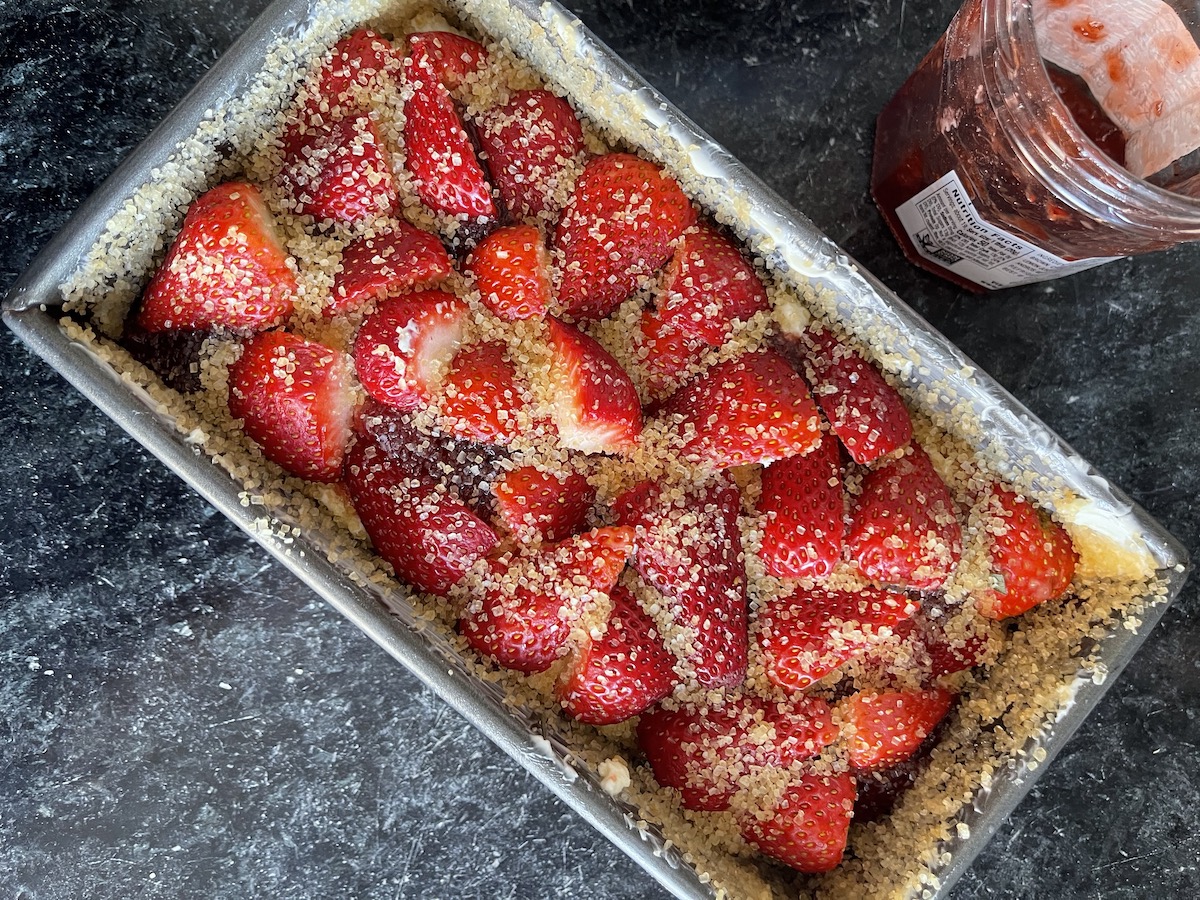
Origin Story
This recipe in a combination of my own Strawberry Snacking Cake, Alison Roman’s Chocolate Banana Bread (that’s where I got the genius idea of lining the loaf pan with sugar), Smitten Kitchen’s Strawberry Summer Cake (another perfect recipe if you don’t agree with my cake shape hierarchy), and Julia Turshen’s Greek Yogurt Cake with Jam.
As an amateur baker with an amateur understanding of baking science, it took some tweaking to get right. (Read: I had to clean the bottom of my oven more than once while developing this recipe.) I did that hard “research” so you don’t have to.
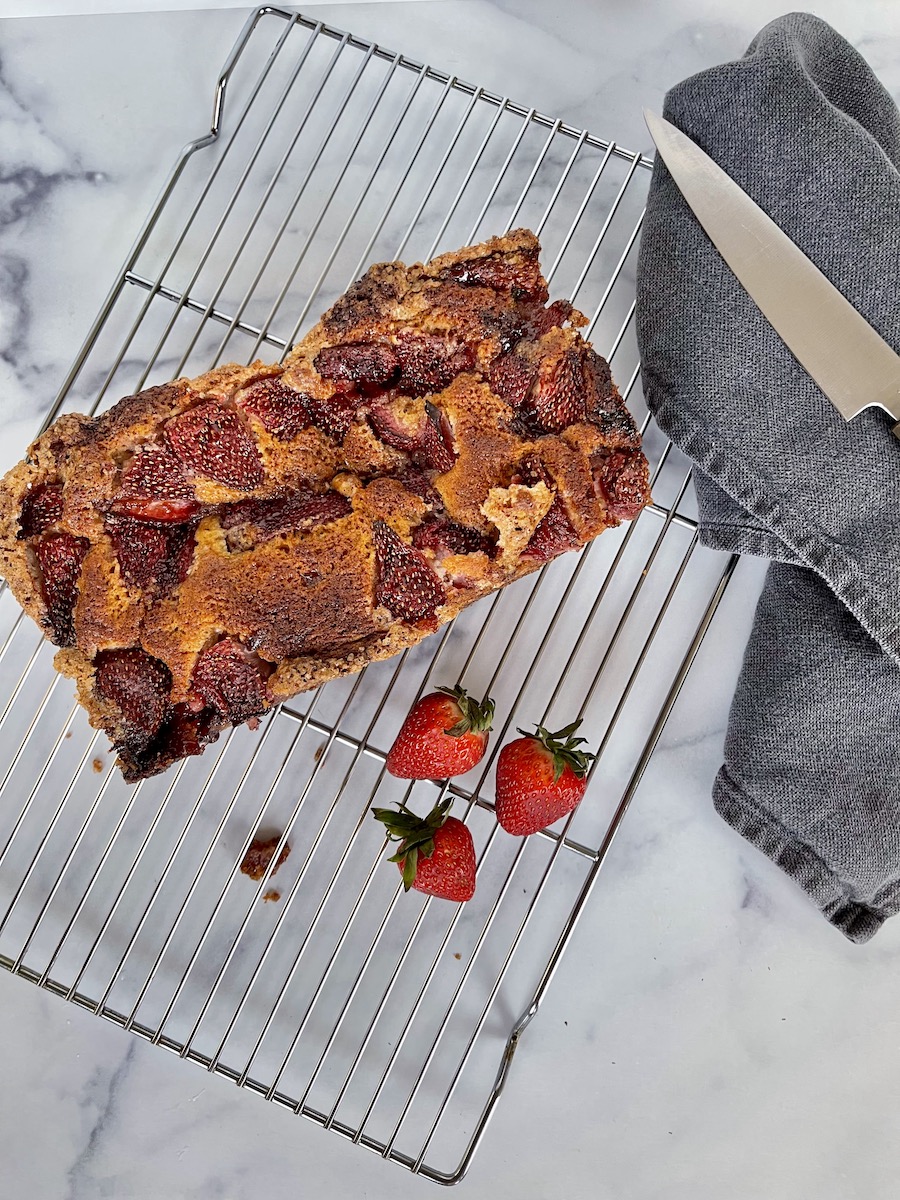
Serving Suggestions
I hope this Strawberry and Yogurt Loaf Cake finds its way into your baking repertoire. It deserves center stage after a dinner party topped with whipped cream or vanilla ice cream, or a place on your brunch table served with plain yogurt and fresh fruit. Guests will want the recipe and you’ll know where to send them.
As always, tag me in your food photos on Instagram @whatweeat.nyc and report back here.
Happy cooking!
STRAWBERRY AND YOGURT LOAF CAKE
Ingredients
- 1/4 cup turbinado sugar (aka demerara sugar or sugar in the raw) plus 1 tbsp to top strawberries
- 6 tbsp butter plus 1 tbsp for coating loaf pan, room temp
- 1/2 cup granulated sugar
- 1.5 cups all-purpose flour
- 1 tsp baking soda
- 1 tsp kosher salt
- 1 tsp vanilla extract (you can be heavy handed here)
- 1 egg
- 1 cup plain, whole milk yogurt
- Very scant 1/2 lb strawberries, hulled and halved or quartered (little less than half a box, or ~1.5 cups)
- 1/4 cup strawberry jam
Method
- Preheat the oven to 350 degrees.* Generously butter a 9 x 5-inch loaf pan. Sugar the inside of the pan with 1/4 cup of the turbinado sugar, tapping out excess. Get right up to the lip of the pan because the cake will rise to the tippety top.
- Using a stand mixer or hand mixer**, beat the butter and sugar together for ~5 minutes until light in color and fluffy. Add the vanilla extract and eggs. (Reserve yogurt until end.)
- Meanwhile, whisk together the flour, baking soda and salt. Hull and halve the strawberries.
- Add the dry ingredients to the wet ingredients and mix until just incorporated. Using a spatula, fold in the yogurt until fully incorporated but not over mixed.
- Pour the batter into the prepared loaf pan, smoothing the top. Use a small spoon to dollop the strawberry jam over the batter, keeping the jam more towards the center of the cake than to the sides. (If you push it to the sides, it’s a little hard to turn out the cooled cake because the jam gets sticky.) Use the back of spoon to swirl it here and there. It doesn’t have to be perfect.
- Finally, top with the halved strawberries, Tetris-ing them in so every square inch of the top is covered. If you have extra strawberries, those are your chef’s treat. Sprinkle the top with the last heaping tablespoon of turbinado sugar.
- Place loaf pan on a sheet tray (just in case) and bake until the sides of the cake start to pull away and the cake is baked through in the center, about 80-90 minutes. It should spring back slightly when pressed in the center.
- Cool on the stovetop or on a cooling rack for 1 hour. Use a knife to encourage the sides away from the pan. It will be a little sticky here and there but should eventually pull away. Turn out a place on a serving platter to cool for another 30 minutes before slicing.**
- The cake is delicious for a couple of days in an airtight container so can be made ahead. Mine has never lasted more than two days.
Serves 8-10 people
*I use my convection setting here. If you don’t have one, the cake might take closer to 90 minutes to be fully cooked.
**You can do this by hand but you really want to aerate that butter (make it extra fluffy) and this is MUCH easier with some equipment.
***To be honest, I’ve of course turned this out and sliced this within 30 minutes of it coming out of the oven. We’re just talking “ideally” here.
Want more dessert recipes?
